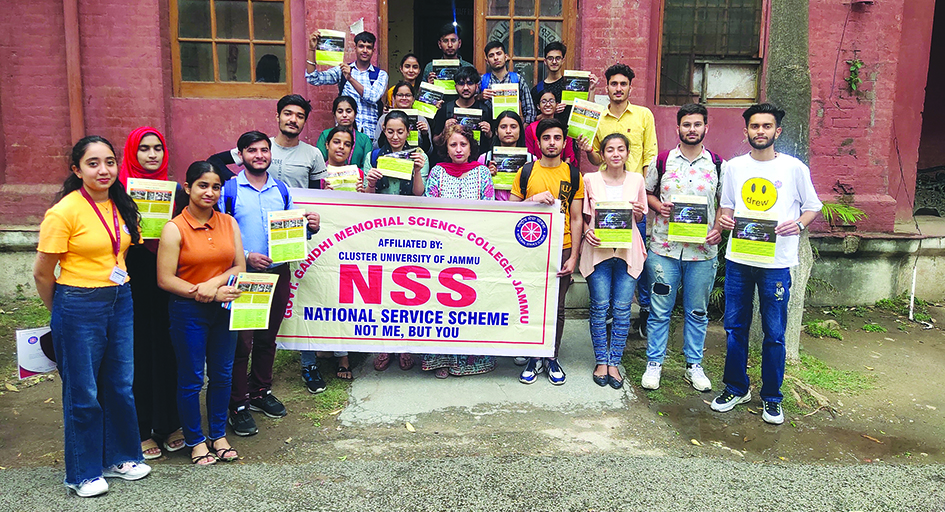 Early Times Report Early Times Report
Jammu, May 30: NSS Govt. Gandhi Memorial Science College under the patronage of worthy Principal Dr. Ravender Tickoo and guidance of NSS PO Dr. Deepali Mahajan organized E-waste awareness campaigning in the college campus in the ongoing summer camp. This campaigning is an initiative by JKPCC and was inaugurated today in presence of different colleges. NSS volunteers today started the awareness in G.G.M Science College and interacted with students and the faculty. E-waste recycling is the reuse and reprocessing of electrical and electronic equipment of any type that has been discarded or regarded as obsolete. Recycling of e-waste is a growing trend and was initiated to protect human and environmental health mainly due to the widespread environmental pollution impacts of e-waste. The major objective of e-waste management is to reduce, reuse, and recycle. Some of the e-waste consists of valuable covering or materials inside which can be reused or recycled. Whereas some of the e-waste may contain hazardous chemical materials which should be disposed of carefully without causing harm to nature. Bring your usable devices to a donation center. Places like Goodwill and Salvation Army take any usable items that could be resold. Ask around to groups in your community. Sell your old electronics locally. Sell your used devices online. Although e-waste is a general term, it can be considered to denote items such as TV appliances, computers, laptops, tablets, mobile phones, white goods - for example, fridges, washing machines, dryers - home entertainment and stereo systems, toys, toasters and kettles. When e-waste is exposed to the heat, toxic chemicals are released into the air damaging the atmosphere; this is one of the biggest environmental impacts of e-waste. Those toxic materials can then seep into the groundwater, affecting both land and sea animals. Electronic waste can also contribute to air pollution. The most common hazardous electronic items include LCD desktop monitors, LCD televisions, Plasma Televisions, TVs and computers with Cathode Ray Tubes. E-waste contains hundreds of substances, of which many are toxic. This includes mercury, lead, arsenic, cadmium, selenium, chromium, and flame retardants. Electronic waste disposal is a critical issue in India as these electronic scrap contains potentially harmful components such as lead, cadmium, beryllium, or brominated flame retardants which are very harmful for environment & health. E-waste often contains precious metals such as gold, copper and nickel and rare materials of strategic value such as indium and palladium. These precious and heavy metals could be recovered, recycled and used as valuable source of secondary raw materials. The rapid rise in e-waste recovery is due in large part to three factors: increased spending on electronic products, enhanced awareness of its high toxicity, and the growing recognition of the valuable substances found in some electronic components. A large number of what is labeled as “e-waste” is actually not waste at all, but rather whole electronic equipment or parts that are readily marketable for reuse or can be recycled for materials recovery. Only 12.5% of e-waste is currently recycled |
